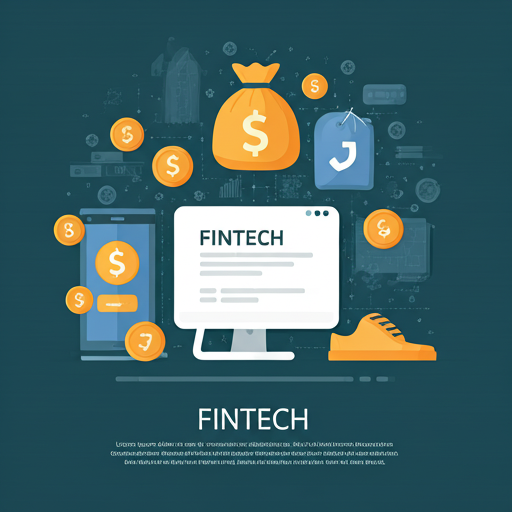Introduction to Fintech Innovations
Defining Fintech and Its Importance
Fintech, or financial technology, encompasses a broad range of innovations that enhance and automate financial services . These innovations include mobile banking, peer-to-peer lending, and blockchain technology. Such advancements streamline operations and improve user experiences. They also foster financial inclusion by providing access to underserved populations. This is crucial in today’s digital economy.
Moreover, fintech solutions often reduce transaction costs and increase efficiency. For instance, automated payment systems can process transactions in real-time. This is a game changer. As a result, businesses can operate more effectively. The rapid evolution of fintech is reshaping traditional banking paradigms. It’s an exciting time for finance.
Overview of Current Trends in Fintech
Current trends in fintech reveal a significant shift towards digital banking solutions. He observes that consumers increasingly prefer mobile applications for their financial transactions. This preference enhances convenience and accessibility. As a result, traditional banks are compelled tk innovate. They must adapt to remain competitive in this evolving landscape.
Additionally, the rise of artificial intelligence in fintech is noteworthy. AI algorithms can analyze vast amounts of data to provide personalized financial advice. This capability improves customer engagement and satisfaction. It’s a remarkable development. Furthermore, the integration of blockchain technology is transforming payment systems. He believes this will enhance security and transparency. The future looks promising.
The Role of Blockchain Technology
Understanding Blockchain Basics
Blockchain technology operates as a decentralized ledger that records transactions across multiple computers. He notes that this structure enhances security and reduces the risk of fraud. Each transaction is grouped into blocks, which are then linked in chronological order. This creates an immutable chain of data.
Key features of blockchain include:
These attributes make blockchain particularly valuable in financial services. He believes that its application can streamline processes and reduce costs. The implications are significant.
Blockchain’s Impact on Banking Security
Blockchain technology significantly enhances banking security through its decentralized architecture. He emphasizes that this structure minimizes the risk of single points of failure. Each transaction is encrypted and linked to the previous one, creating a secure chain. This makes unauthorized alterations nearly impossible.
Key benefits of blockchain in banking security include:
These features collectively bolster trust in financial systems. He believes that adopting blockchain can lead to more resilient banking infrastructures. The potential is immense.
Cryptocurrencies and Their Influence
How Cryptocurrencies Are Reshaping Payments
Cryptocurrencies are fundamentally transforming payment systems past offering decentralized alternatives to traditional banking. He notes that these digital currencies facilitate faster transactions across borders. This is particularly beneficial for international trade. Additionally, cryptocurrencies often reduce transaction fees compared to conventional methods.
Key influences of cryptocurrencies on payments include:
These advantages are reshaping consumer expectations. He believes that as adoption grows, traditional payment systems will need to adapt. The landscape is changing rapidly.
The Future of Digital Assets in Banking
The future of digital assets in banking is poised for significant evolution as cryptocurrencies gain traction. He observes that financial institutions are increasingly exploring blockchain technology to enhance operational efficiency. This shift can lead to reduced costs and improved transaction speeds. Furthermore, the integration of digital assets into banking services can facilitate innovative financial products.
Key considerations for the future include:
These factors will shape the landscape of banking. He believes that embracing digital assets is essential for future competitiveness. The transformation is underway.
Regulatory Challenges and Opportunities
Navigating the Regulatory Landscape
Navigating the regulatory landscape presents both challenges and opportunities for fintech companies. He notes that regulatory uncertainty can hinder innovation and investment. Compliance with varying regulations across jurisdictions complicates operations. This often leads to increased costs and resource allocation.
However, there are opportunities for collaboration between regulators and fintech firms. By engaging in dialogue, both parties can develop frameworks that promote innovation while ensuring consumer protection.
Key areas of focus include:
These considerations are crucial for sustainable growth. He believes that proactive engagement with regulators can foster a more favorable environment. The stakes are high.
Opportunities for Collaboration Between Fintech and Regulators
Opportunities for collaboration between fintech companies and regulators are increasingly recognized as essential for fostering innovation. He observes that regulators can benefit from fintech’s agility and technological advancements. By working together, they can create regulatory sandboxes that allow for experimentation in a controlled environment. This approach can lead to more effective regulations that promote growth while ensuring consumer protection.
Key areas for collaboration include:
These collaborative efforts can streamline regulatory processes. He believes that such partnerships can lead to a more robust financial ecosystem. The potential for mutual benefit is significant.
The Future of Banking: Predictions and Trends
Emerning Technologies to Watch
Emerging technologies are set to redefine the future of banking. He highlights the potential of artificial intelligence in enhancing customer service through chatbots and personalized financial advice. This technology can analyze vast datasets to predict consumer behavior. Additionally, machine learning algorithms can improve fraud detection systems.
Blockchain technology also holds promise for secure transactions and transparent record-keeping. It can streamline processes and reduce operational costs.
Key technologies to monitor include:
These innovations are reshaping financial services. He believes that staying informed is crucial for industry professionals. The landscape is evolving rapidly.
How Fintech Will Shape Consumer Banking Experiences
Fintech is poised to significantly enhance consumer banking experiences through innovative solutions. He notes that personalized banking services will become the norm, driven by data analytics. This technology allows banks to tailor products to individual needs. Additionally, mobile banking applications will offer seamless access to financial services.
Key trends shaping consumer experiences include:
These advancements will empower consumers to make informed decisions. He believes that user-centric design will be critical for engagement.
